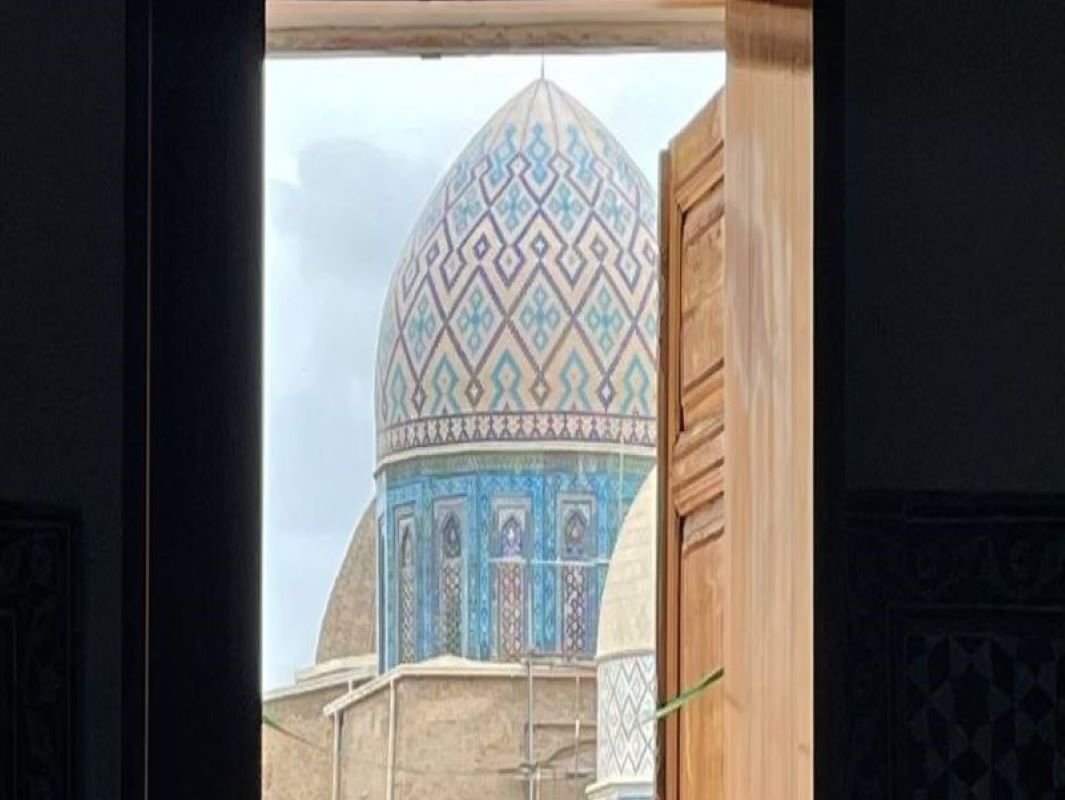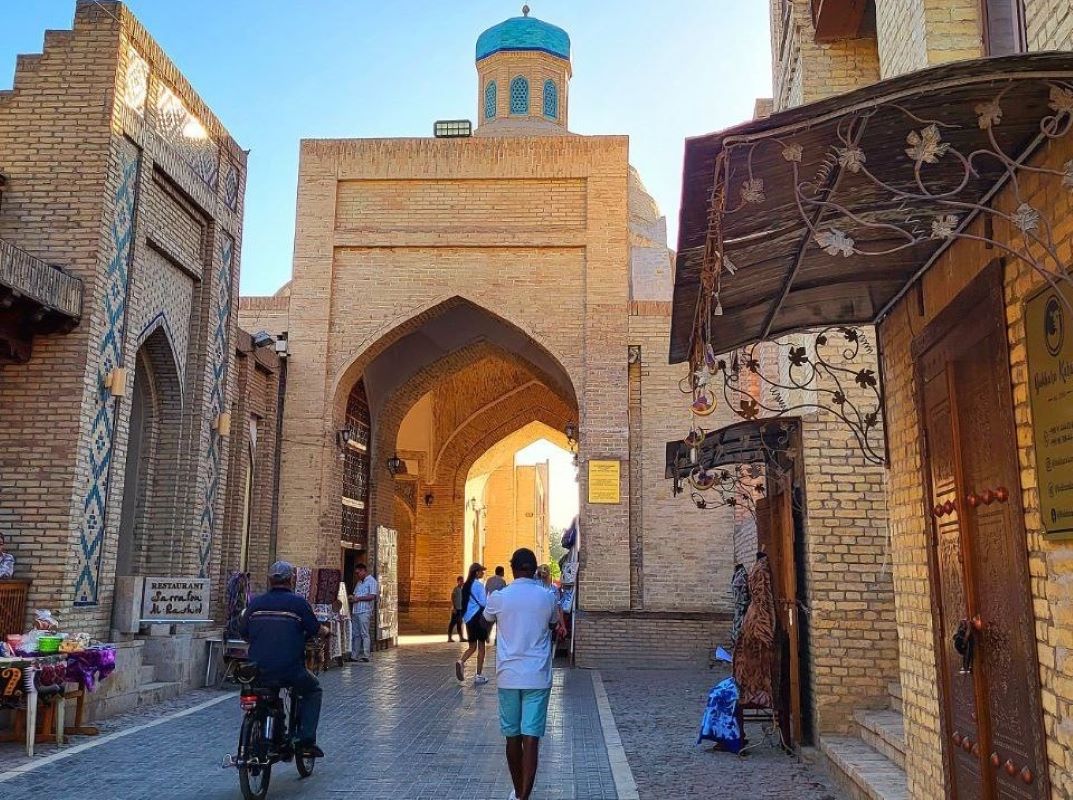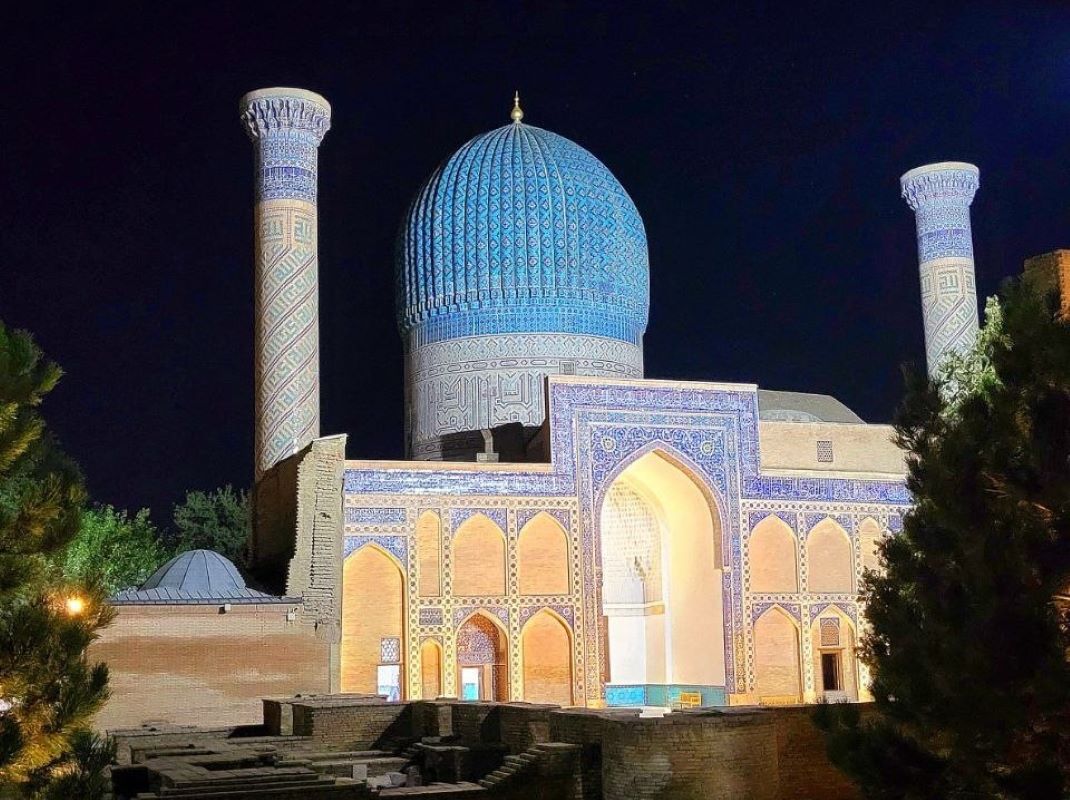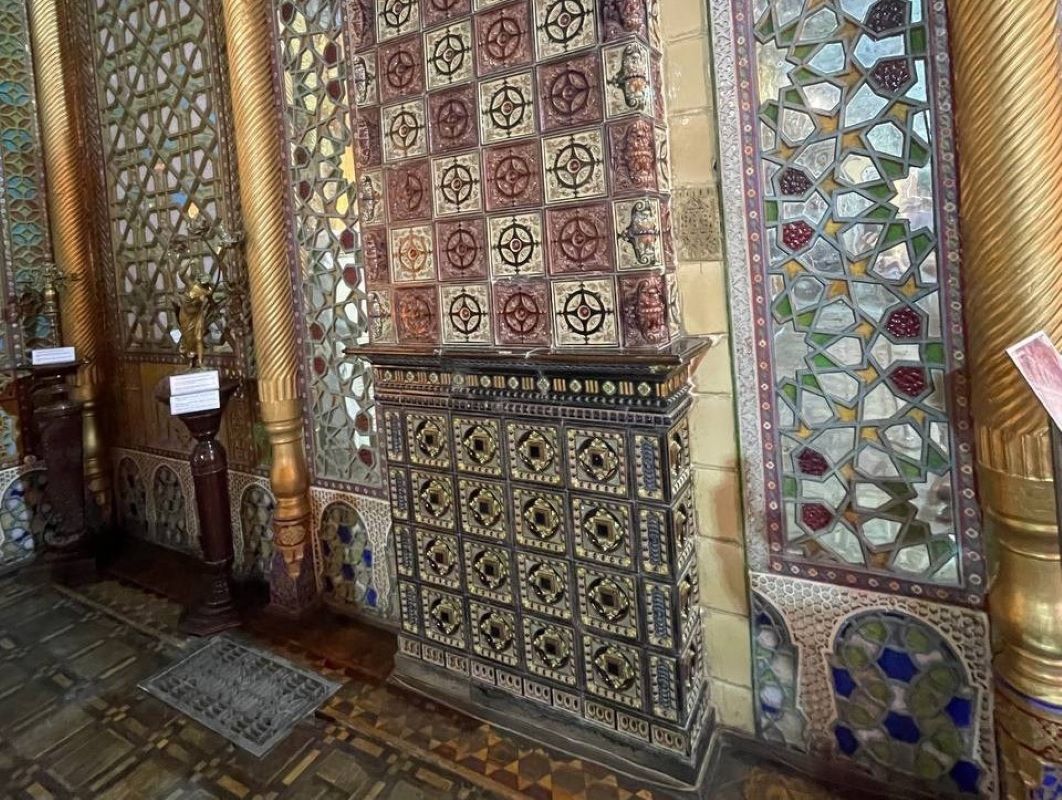Bukhara, which is situated on the Silk Route, is more than 2,000 years old. It is the most complete example of a medieval city in Central Asia, with an urban fabric that has remained largely intact. Monuments of particular interest include the famous tomb of Ismail Samani, a masterpiece of 10th-century Muslim architecture, and a large number of 17th-century madrasas.
The Historical Center of Bukhara, a UNESCO World Heritage Site, is a living testament to the rich history and cultural heritage of Uzbekistan. Situated on the ancient Silk Road, Bukhara has been a center of trade, scholarship, and Islamic culture for over two millennia. Here’s an overview of this remarkable historical site:
1. Kalon Minaret and Mosque
Dominating the skyline of Bukhara, the Kalon Minaret is an architectural marvel dating back to the 12th century. Adjacent to it stands the Kalon Mosque, one of the largest in Central Asia, with a vast courtyard and stunning blue domes.
2. Po-i-Kalyan Complex
This architectural ensemble includes the Kalon Mosque, Kalon Minaret, and the Mir-i-Arab Madrasah. The Mir-i-Arab Madrasah is still functioning as an Islamic school, maintaining the tradition of scholarship that has characterized Bukhara for centuries.
3. Ark of Bukhara
The Ark is an ancient fortress that served as the royal residence and administrative center of Bukhara for over a millennium. Within its walls are palaces, mosques, and dungeons, offering insights into the city’s political and social history.
4.Chor Minor
This picturesque structure, also known as the Four Minarets, dates back to the 19th century. It features four ornately decorated minarets, each representing one of the four schools of Islamic thought
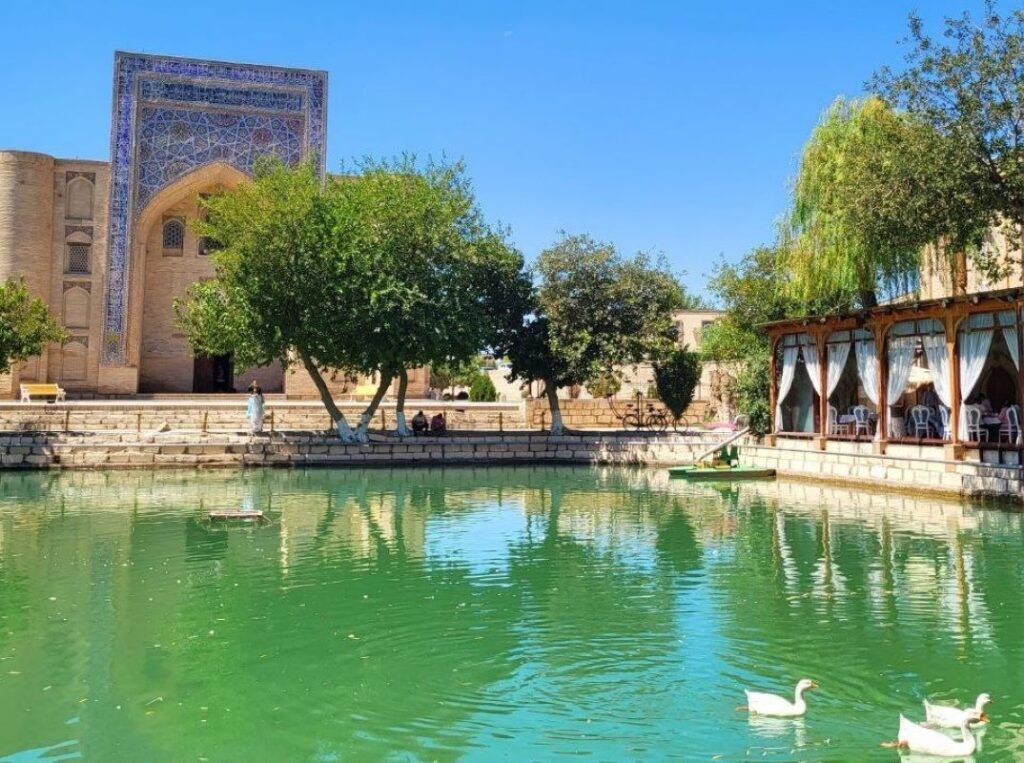
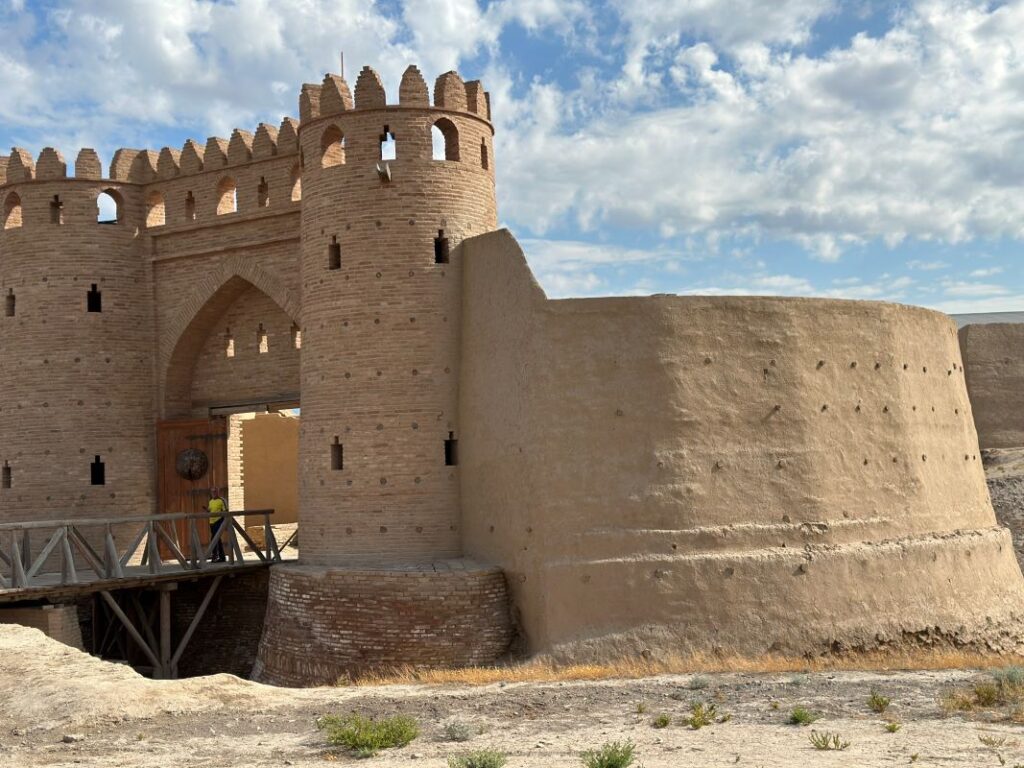
5. Bolo Hauz Mosque
Built in the 18th century, this mosque is distinguished by its beautiful wooden columns and intricately painted ceilings. It served as the emir’s Friday mosque during the Bukhara Khanate.
6. Trading Domes
Bukhara’s ancient trading domes, including Toki Zargaron (Jeweler’s Dome), Toki Telpak Furushon (Cap Makers’ Dome), and Toki Sarrafon (Money Changers’ Dome), are remnants of the city’s vibrant commercial past. Today, they house shops selling handicrafts, textiles, and souvenirs.
7. Lyab-i-Hauz Complex
This historic area centers around a large reservoir, or “hauz,” surrounded by mulberry trees. It’s a popular gathering place, especially in the evenings, with restaurants and tea houses lining its banks.
8. Magoki Attori Mosque
One of the oldest mosques in Bukhara, the Magoki Attori Mosque dates back to the 9th century and has been rebuilt several times. Its name translates to “mosque in the pit,” as it was originally built on the site of a Zoroastrian temple.
Exploring the Historical Center of Bukhara is like stepping back in time, with its labyrinthine streets, ancient monuments, and vibrant bazaars preserving the essence of a bygone era. It’s a must-visit destination for anyone interested in history, architecture, and the cultural heritage of Central Asia.


